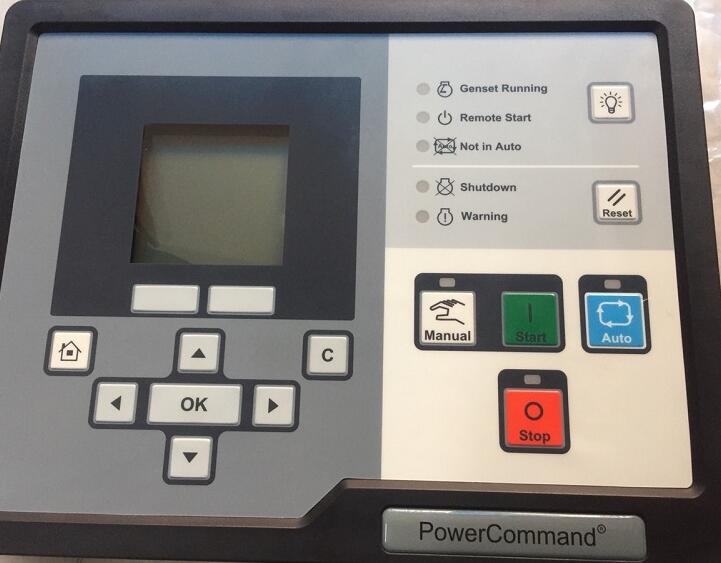Here is the instruction show you guide on how to repair PCC1302 PowerCommand trouble code 1667 AUX 101 exhaust temperature OOR warning.

Related Contents:
2024 InPower V14.5 Pro V12 Diagnostic Software Free Download
PowerCommand Diagnostic 9 Pin Adapter Cable for InPower
Logic:
Exhaust gas temperature sensor signal is out of range – shorted high.
Possible Causes:
1 Faulty exhaust gas temperature sensor connections
2 Faulty exhaust gas temperature sensor
3 Faulty engine harness
4 Faulty extension harness
5 Verify the calibrations in the ECM and the PCC control
Diagnosis and Repair:
1 Faulty exhaust gas temperature sensor connections
a Inspect the exhaust gas temperature sensor and the engine harness connector pins.
a Disconnect the engine harness connector from the exhaust gas temperature sensor.
b Inspect for corroded pins, bent or broken pins, pushed back or expanded pins.
c Inspect for evidence of moisture in or on the connector.
d Inspect for missing or damaged connector seals.
e Inspect for dirt or debris in or on the connector pins.
2 Faulty exhaust gas temperature sensor
a Active Sensor.
a Check the exhaust gas temperature sensor supply voltage.
a Disconnect the engine harness connector from the exhaust gas temperature sensor.
b Install the pressure sensor breakout cable between the sensor and the sensor harness connector.
c Measure the supply voltage by connecting the breakout cable’s supply and return connectors to the multimeter. If the reading is between 4.75 and 5.25 VDC, then the supply voltage is correct.
b Check exhaust gas temperature sensor signal (sense) voltage.
a Disconnect the engine harness connector from the exhaust gas temperature sensor.
b Install the pressure sensor breakout cable between the sensor and the
sensor harness connector.
c Measure the signal voltage by connecting the breakout cable’s signal and return connectors to the multimeter. If the reading is between 0.46 and 4.56 V, then the signal voltage is correct. If not, sensor is faulty.
3 Faulty engine harness
a Inspect the engine harness and the connector pins.
a Disconnect the engine harness connector from the extension harness.
b Inspect for corroded pins, bent or broken pins, pushed back or expanded pins.
c Inspect for evidence of moisture in or on the connector.
d Inspect for missing or damaged connector seals.
e Inspect for dirt or debris in or on the connector pin.
b Check for a short circuit from pin to pin.
a Disconnect the engine harness from the extension harness.
b Disconnect the engine harness connector from the exhaust gas temperature sensor.
c Disconnect the engine harness from all sensors that have a shared supply or return with the fuel pressure sensor.
d Measure the resistance from the exhaust gas temperature 5 VDC supply pin on the engine harness inline connector to all other pins in the engine harness inline connector.
e Measure the resistance from the exhaust gas temperature sensor pin on the engine harness inline connector to all other pins in the engine harness inline connector.
f Measure the resistance from the exhaust gas temperature signal pin on the engine harness inline connector to all other pins in the engine harness inline connector.
g If all measurements are greater than 100k ohms, then the resistance is correct.
c Check for an open circuit.
a Disconnect the engine harness from the extension harness.
b Disconnect the engine harness connector from the exhaust gas temperature sensor.
c Measure the resistance from the exhaust gas temperature return pin on the engine harness inline connector to the exhaust gas temperature return pin on the engine harness sensor connector.
d If the measurement is less than 10 ohms, then the resistance is correct.
4 Faulty extension harness
a Inspect the extension harness and the control connector pins.
a Disconnect the extension harness connector from the control.
b Inspect for corroded pins, bent or broken pins, pushed back or expanded pins.
c Inspect for evidence of moisture in or on the connector.
d Inspect for missing or damaged connector seals.
e Inspect for dirt or debris in or on the connector pins.
b Check for an open circuit.
a. Disconnect the extension harness connector from the control.
b Disconnect the extension harness from the engine harness.
c Measure the resistance from the exhaust gas temperature return pin on the extension harness connector to the exhaust gas temperature return pin on the extension harness inline connection.
d If the measurement is less than 10 ohms, then the resistance is correct.
c Check for a short circuit from pin to pin.
a Disconnect the extension harness connector from the control.
b Disconnect the extension harness from the engine harness.
c Measure the resistance from the exhaust gas temperature 5 VDC supply pin on the extension harness connector to all other pins in the extension harness connector.
d Measure the resistance from the exhaust gas temperature return pin on the extension harness connector to all other pins in the extension harness connector
e Measure the resistance from the exhaust gas temperature signal pin on the extension harness connector to all other pins in the extension harness connector.
f If all measurements are greater than 100k ohms, then the resistance is correct.
5 Verify the calibrations in the ECM and the PCC control
a Using the display or the InPower Service tool, verify the calibration in the PCC control.
a If the calibration in the PCC control matches the latest calibration on the InCal website, then the calibration is correct. If it does not, update the calibration to the latest.
b Using the InSite Service tool, verify the calibration in the ECM.
a If the calibration in the ECM matches the latest calibration on QSOL, then the calibration is correct. If it does not, update the ECM to the latest calibration.